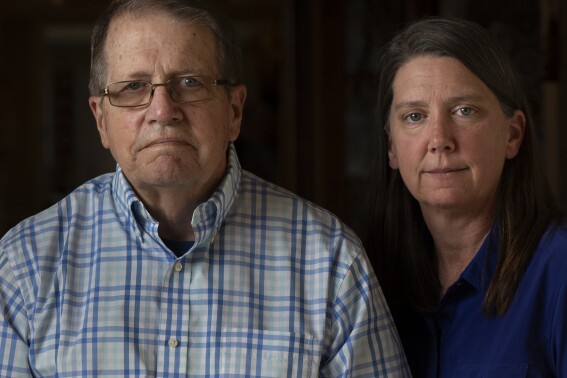This was a general election of enormous interest to students of statistics as well as politics. Labour’s majority of 172 is, of course, historically large – and that is what is rightly dominating the post-election headlines.
Yet pre-election talk of Sir Keir Starmer’s party commanding a 250-seat lead in the House of Commons, or of the hapless Conservatives being pushed into third place by the Liberal Democrats, turned out to be so much campaign hyperbole.
Tony Blair’s first-term majority of 179 back in 1997 was bigger than that just won by Starmer. And as statistical nerds have been pointing out, Labour’s latest vote share was just 36pc – significantly less than the 40pc chalked up by Jeremy Corbyn when he denied Theresa May’s Tories a Commons majority in 2017.
As the political dust settles, there will be complaints that Labour’s huge majority, and the enormous power that represents, was backed by just 22pc of eligible voters – that is, 36pc of the 60pc of the electorate who cast their ballot. This is Starmer’s “loveless landslide”.
Blair came into office off the back of a 72pc national turnout, reflecting the reality there was genuine enthusiasm for “New Labour” – a stark contrast to Thursday’s election, when so many of us voted negatively, for our least-worst option.
Those pesky statisticians point out that Labour now boasts no less than 63pc of all MPs in the new Parliament, having won little more than a third of votes cast. And while the Liberal Democrats have surged to 71 seats, 11pc of the new Parliament, on around 10pc of the vote, Reform grabbed 14pc of the national vote share, but got just four seats.
That’s because the Lib Dems, seasoned campaigners that they are, focus on winning votes in carefully-targeted constituencies, while Farage’s upstart party received widespread support, coming second in many other constituencies. The Lib Dems now control almost 18 times more Commons seats than a party that easily beat them in terms of electoral support – by around 650,000 votes.
Starmer has floated the idea of lowering the vote age from 18 to 16 – a move that is likely to prove hugely controversial. But the highly “unrepresentative” nature of this Parliament means that, if constitutional upheaval is anyway afoot, there will be huge pressure – not least from Farage – for a move away from the vagaries of first-past-the-post and towards a more proportionate system.
Labour’s vote share on Thursday, after all, was just 4 percentage points higher than the party achieved in the 2019 general election. Yet instead of being on the receiving end of a Tory majority of 80 under Boris Johnson, Starmer now has a majority twice the size of that controlled by the former Conservative prime minister.
First-past-the-post has many advantages – not least the link it ensures between MPs and their constituents. But the statistical fine print can’t be denied – the UK’s electoral system is fraying at the edges.
The political narrative that Labour is all-conquering will also quickly give way to the statistical realities of economics. In 1997, Blair enjoyed what outgoing Tory chancellor Ken Clarke called a “golden inheritance”. The economy was indeed set to motor, with quarterly growth at an eight-month high and the national debt at just 36pc of GDP.
The UK today, in contrast, is sluggish. While the economy expanded at 0.7pc during the three months to March, faster than most other large Western economies, the annual growth rates during Blair’s first term – often exceeding 3-4pc – are unthinkable in the current climate.
On top of that, Britain’s national debt soared from £1.8 trillion when lockdown began in March 2020 to £2.7 trillion, with debt now at its highest level as a share of GDP since the 1960s.
The Government spent £102bn servicing our massive debt pile last year, almost twice the annual defence budget. In May the UK borrowed another £15bn, while paying £8bn in yet more debt interest.
Our national debt is now around 100pc of GDP and the tax burden is already at a 70-year high. Labour’s ability to raise serious money both by borrowing more and/or raising taxes even further is likely to prove difficult – not in terms of getting any relevant legislation through Parliament, of course, but in terms of practical commercial and economic realities.
If any of Labour’s new MPs don’t get that, then they soon will when faced with the immutable laws of mathematics and finance.
To make the public finances add up, Labour desperately needs growth, spreading higher debt and spending across a bigger economy. The spectre of Liz Truss will loom large over this Parliament, even though the former Tory prime minister last week spectacularly lost her seat.
And if growth doesn’t come from government borrowing and spending, then it will need to be won via supply-side reforms – remaking our planning system or giving tax breaks to wealthy corporate investors. Such measures are hard won, take time and are often highly controversial – not least among the Left-wing voters and MPs Labour needs to keep sweet.
And although inflation has now reached “normal” levels, the cost of living crisis is far from over. Yes, the consumer price index rose just 2pc during the year to May, the lowest level in nearly three years, finally hitting the Bank of England target. But prices are still rising, and they remain far higher than just a few years ago, with food now some 30pc more expensive than in 2021 and household energy bills up 60pc.
The reality is that millions of families are struggling with growing debts, despite having already spent several years sacrificing not just luxuries but some essentials. Unless that changes fast, then political dominance will count for little, and Labour’s honeymoon will be short.
Disclaimer: The copyright of this article belongs to the original author. Reposting this article is solely for the purpose of information dissemination and does not constitute any investment advice. If there is any infringement, please contact us immediately. We will make corrections or deletions as necessary. Thank you.




